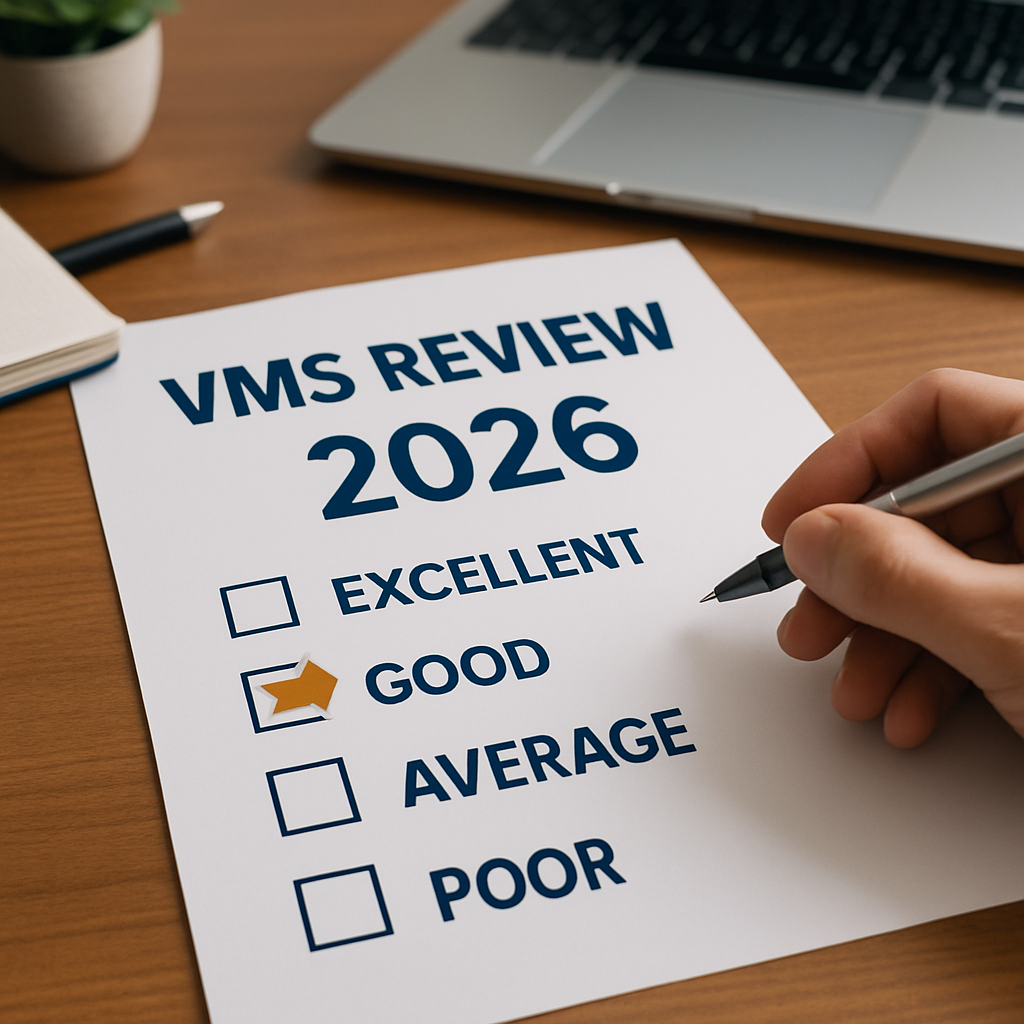Not all Vendor Management Systems are alike. Technology has evolved such that the more modern VMS are quite different from traditional legacy vendor management systems. In this article, we are going to look at why it's important that you understand the difference between a legacy VMS and a more modern one that has built-in APIs - so that you can seamlessly connect your VMS within your IT infrastructure.
The Importance of Custom VMS Integration
A key factor when choosing a VMS is how it will integrate with your other workforce and procurement systems, so that data flows seamlessly from one system to another. Integration is a critical step in ensuring you have easy and complete visibility into your entire workforce not just your contingent workforce program and that all hiring managers are following standardized processes.
How legacy vendor management systems communicate with other systems
Traditionally, legacy VMS systems were built with native functionality that allowed them to perform tasks such as managing background checks, scheduling interviews, or sending email notifications.
When an organization required the vendor management system to “talk” with other systems, the IT teams would have to build native custom integrations on a client level with custom codes implemented into both systems that needed to communicate with one another.
While these native integrations achieve results fine, they are far from simple to implement. It takes significant resources, specialized expertise, and unique knowledge of the company’s specific requirements to implement. As expected, this means they are incredibly expensive.
System integrators have grown exponentially as a result, building new integrations, and conducting ongoing maintenance for organizations that simply do not have the resources in-house to do so.
Not only that but the more of these custom integrations are built the more the vendor management system becomes bogged down.
As latency, downtime and patches grow over time, legacy VMS systems with custom, native integrations become a point of user frustration.
When internal teams become frustrated with their vendor management system, they start looking for ways to “cheat the software”. Rather than working within the VMS, team members and hiring managers start to work outside of the system, resulting in a lack of visibility and reduced program control that impacts the success of the company’s contingent workforce program.
Organizations that need modern technology that can seamlessly talk with other systems at a fraction of the cost and complexity of traditional VMS software should move away from these custom VMS integrations and instead look at modern systems with a built-in API.
How APIs are Changing the Game
An application programming interface, more commonly known as an API, is a set of definitions and protocols that determine how two or more computer programs communicate with each other.
APIs are used to build and integrate application software, making it possible for multiple systems to talk to each other and share data. So, why is this evolution in software development important when it comes to vendor management systems and your contingent workforce program?
Rather than using the native, custom codes of legacy vendor management systems, the newest VMS tech stacks are making use of APIs that make it easy, fast and cost-effective to integrate with other systems that also have an API.
So, what does this mean for your business?
When you use one of these modern vendor management systems, no longer will your organization have to build and maintain native integrations. Instead, you’ll have access to a system that already includes pre-built integrations with dozens of the most popular complementary systems, including:
- HRIS
- ATS
- ERPs
- Talent marketplaces
- Scheduling
- Clock-in systems
- And so many more.
This makes it easy for your technical teams to integrate a VMS within your IT infrastructure, less expensive for your business, and increases VMS buy-in from your team who will no longer be frustrated by complex technologies and slow systems.
The Benefits of using a modern VMS Software with API
✔️ It saves your business money
To get the benefits of an API in legacy VMS systems businesses would have to work with a system integrator to build a custom code for the systems they want connected, as well as to maintain the integration over time. Modern vendor management systems with a pre-built API means businesses no longer need to work with a system integrator, enabling them to save significant amounts of money.
✔️ Easily connect your VMS with other systems for greater visibility
With a pre-built API your vendor management system will be able to communicate and share data with all other necessary systems within your organization’s IT infrastructure, such as your HRIS. This makes it far more seamless for your business to improve visibility into its contingent workforce management program, giving you the insights you need for continued improvement.
✔️ Enhanced automation
Through the use of APIs, your business can automate and integrate manual tasks with your team’s manual tasks to come up with a smooth and seamless transition between the linked applications. Integrated and automated business processes can help your business cut costs, save time and improve the internal efficiencies of your team.
✔️ It saves your team time
Modern VMS systems that are designed with the latest technology and have a pre-built API will simply work. The only requirement is that your other systems also have an API to connect. Once that is in place, everything will simply work. You won’t need to worry about maintaining that connection, saving your team a huge amount of time.
Learn more about the benefits of a VMS
Learn more about the Benefits of a VMS and what to look for when choosing the best VMS for your organization. Download our Free VMS Buyer's Guide here:
Discover the Power of Conexis VMS
Conexis VMS is purpose-built for organizations seeking to manage their contingent labor spend effectively. Here’s why we're the right choice:
- Fast Deployment: Get up and running in weeks, not months
- Transparent Pricing: Flexible pricing with no hidden costs
- White-Label Ready: Customize the platform with your brand
- Real-Time Insights: Make faster decisions with built-in analytics
- Audit-Ready Compliance: Store contracts, worker data, and rates in one secure hub
About Conexis VMS
Conexis is an award-winning Vendor Management System built for organizations that want the power of enterprise software without the complexity or cost.
Leveraging the latest technology, Conexis delivers the expertise, reliability and security of enterprise systems, while offering the flexibility, user friendliness and tailored, personal service you require. Learn more about our Company and why organizations Choose Conexis VMS.
Looking to Switch Your VMS or Just Getting Started?
Whether you are looking to Switch your VMS, or just Getting Started, we are here to help. Contact Us for a Free No-Obligation Consultation, See how Easy Conexis is to use by taking a quick 2 minute Self-Guided Online Demo, or Book a Personal Demo Today!
Additional Articles on this Topic
- VMS Trends: Harness the Power of Open APIs
- Open APIs in VMS: A Game Changer for MSPs
- Why VMS Integration is Key to Seamless Contingent Workforce Recruiting
- Top Questions to ask a VMS Provider about Implementation






